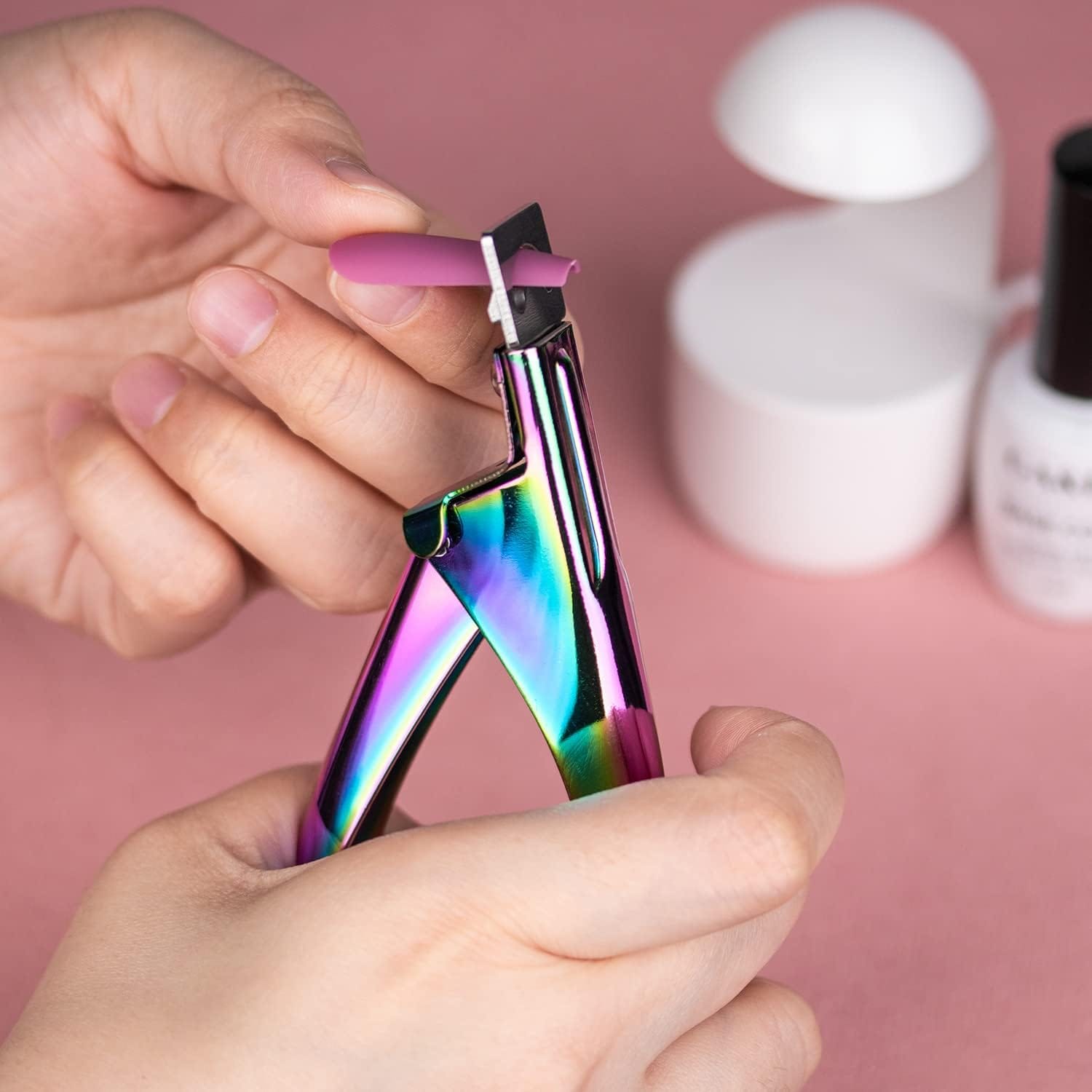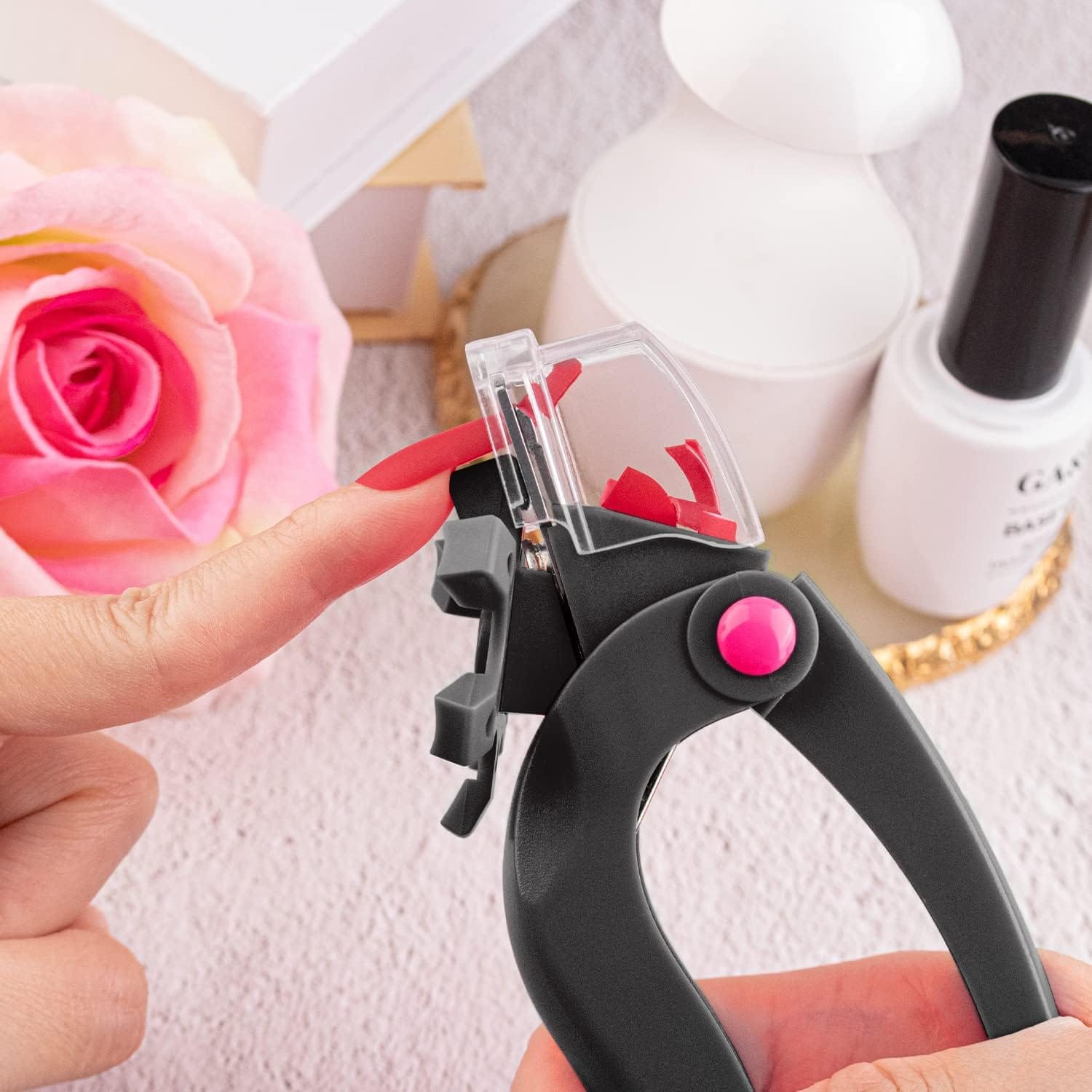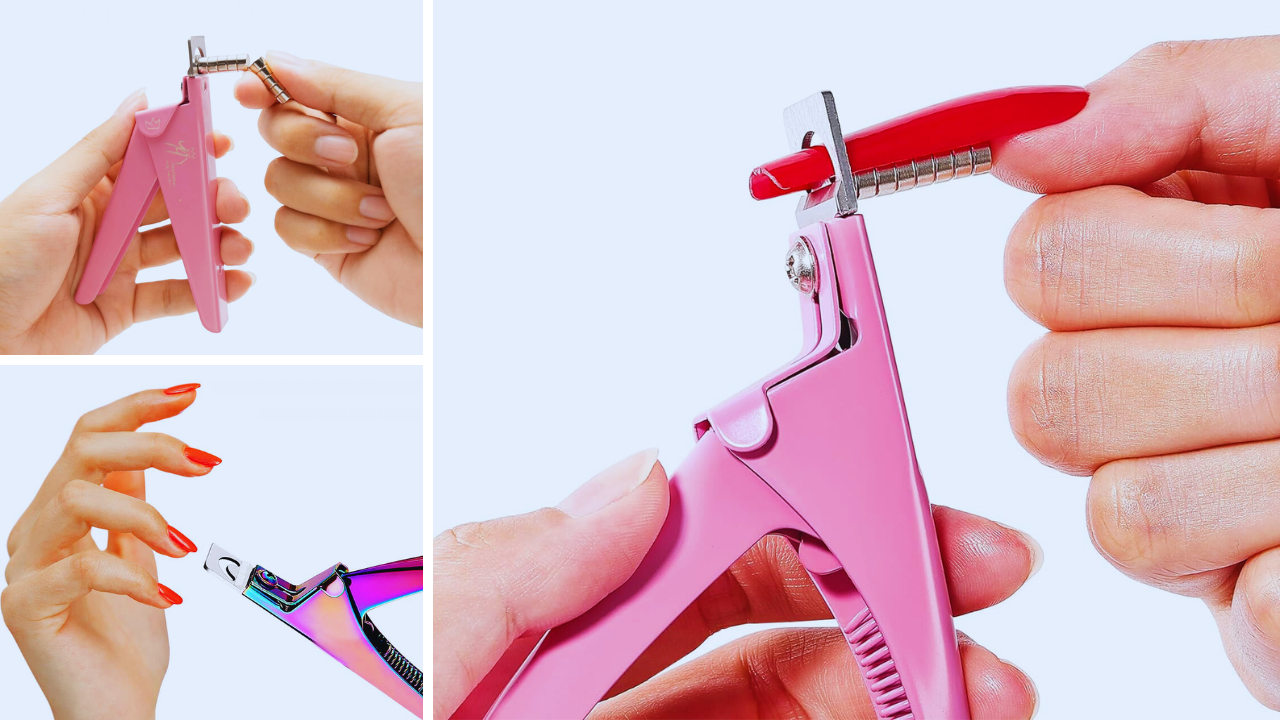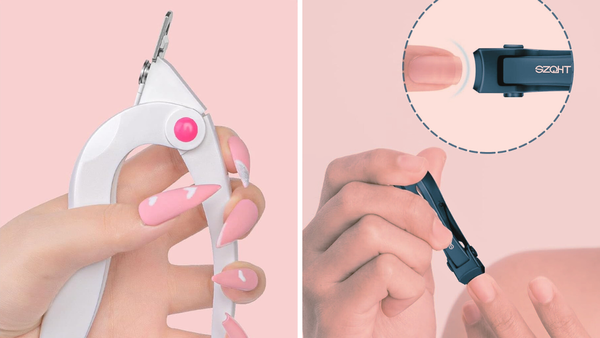Key Takeaways:
- Understanding the Impact: Learn whether using an acrylic nail cutter can lead to nail damage and how to minimize risks.
- Best Practices for Nail Care: Discover the safest techniques for trimming and maintaining acrylic nails.
- Alternatives and Precautions: Explore other methods and precautions to keep your nails healthy while sporting acrylics.
Introduction to Acrylic Nail Cutters

Acrylic nails offer a durable and aesthetic enhancement to natural nails, popular among those who struggle to grow their nails to a desired length or wish to have a polished, manicured look. However, the question arises: does an acrylic nail cutter damage nails? This tool, designed to trim acrylic nails, can be a double-edged sword if not used correctly.
The Right Tool for the Job
Using the correct type of cutter is crucial. Acrylic nail clippers are specifically designed to handle the thicker composition of acrylic nails, unlike regular nail clippers intended for softer, natural nails. Using inappropriate tools can not only damage the acrylic but also exert undue stress on the natural nail underneath, potentially leading to cracks or splits.
Technique Matters

The technique used to cut acrylic nails plays a pivotal role in preventing damage. It's important to cut straight across to avoid creating jagged edges that could catch and lead to further breakage. A jagged cut can also make the acrylic more susceptible to lifting, which can trap moisture and breed infections.
Professional vs. DIY
Visiting a professional nail technician is often the safest choice for trimming acrylic nails. Nail technicians are trained to use electric nail files and specialized clippers to trim, shape, and file acrylic nails without damaging the natural nail. DIY methods, while cost-effective, come with a higher risk of error and potential nail damage.
Risks of Incorrect Cutting
Incorrect use of acrylic nail cutters can lead to several issues. If the acrylic is cut too close to the natural nail, it can cause pain and expose the nail bed to infections. Moreover, aggressive cutting can cause the acrylic to crack, compromising its durability and appearance.
Exploring the Impact of Nail Clippers on Natural Nails

When discussing whether acrylic nail cutters damage nails, it's crucial to consider their impact on natural nails. Using nail clippers or scissors on acrylics can sometimes translate to undue stress on the natural nails beneath. If the acrylic is thick and the tool is blunt, the pressure needed to trim through the acrylic can cause the natural nail to bend or even crack. This is particularly true if the natural nails are long or have been weakened by prolonged use of acrylics. The key is to ensure that any tool used is sharp and designed specifically for acrylic nails to minimize pressure and prevent damage to the underlying natural nail.
Moreover, the technique used in cutting can make a significant difference. For natural nails, using a nail file to gently shape the tips can prevent the harsh impacts associated with clippers and scissors. If cutting is necessary, it's best to opt for a gentle approach, using sharp, precise tools meant for small, careful snips. This method helps maintain the integrity of the acrylic and the natural nail, ensuring that neither is subjected to unnecessary strain. Remember, gentle handling and the right tools can keep your natural nails looking healthy and strong, even under acrylics.
The Art of Shaping Acrylic Nails
When it comes to shaping acrylic nails, the tools and techniques you choose can make or break the final look. An acrylic nail cutter can swiftly trim down the nails to the desired length, but it's crucial to proceed cautiously to avoid jagged edges that could lead to nail damage. A nail file or an electric file should then be used to smooth out the edges, ensuring that each nail not only looks polished but is also shaped in a way that prevents future breakage. This step is vital in maintaining the integrity and health of the acrylic and natural nails beneath.

Beyond cutting, the art of shaping involves understanding the natural curve and contour of your nails. Nail technicians often combine clippers and files to create a harmonious shape that complements the fingers and hands. For those who prefer a DIY approach at home, investing in a good-quality metal file and learning proper filing techniques can make a significant difference. Remember, shaping is not just about aesthetics; crafting a structure supports nail health and prevents discomfort or injury during daily activities.
Understanding the Role of Nail Clippers in Acrylic Nail Care
Acrylic nails, a staple in the beauty world, often raise the question: does using nail clippers damage these artificial enhancements? When it comes to trimming acrylic nails, the type of tool used can make a significant difference. Nail clippers designed for natural nails might not be the best choice for acrylics as they can cause cracks or splits due to their less precise cutting edge. Instead, using a specialized acrylic nail cutter can provide a cleaner cut without stressing the nail, thus preserving both the acrylic and the health of the underlying natural nail.
Conversely, even the right tools can cause harm if used incorrectly. It's crucial to avoid cutting acrylic nails too short, as this can expose the natural nail and surrounding skin to potential damage and infection. A gentle approach is key—trimming just enough to maintain the desired length and shape while keeping the integrity of the acrylic intact. Regular maintenance, including filing the edges smooth after cutting, helps prevent any jagged edges that could snag and lead to further breakage.
The Influence of Nail Care Techniques on Acrylic Longevity
Maintaining the longevity of acrylic nails involves more than just careful cutting; it encompasses a holistic approach to nail care. After trimming acrylic nails, a clear top coat can seal the edges and add an extra layer of protection against peeling and chipping. This not only enhances the shine and polished look of the nails but also fortifies the acrylic against everyday wear and tear. Regular application of cuticle oil can also nourish the nails and keep the cuticles healthy, which is essential for supporting the natural nail beneath the acrylic overlay.
Moreover, the method of shaping acrylic nails post-trim is pivotal in their durability. Using a fine-grit file or an electric file to smooth out the tips can prevent the formation of sharp angles that are prone to breaking. Emphasizing gentle, consistent filing rather than aggressive techniques will help maintain the structural integrity of the acrylics while achieving the desired aesthetic. By adopting these careful shaping and finishing practices, nail enthusiasts can enjoy their beautiful acrylic enhancements for longer without compromising the health of their natural nails.
Nail Care Post-Trimming: Ensuring Longevity and Health

After trimming and shaping your acrylic nails, the next step is crucial: nail care. Applying a clear top coat not only adds a glossy shine but also seals and protects the acrylic from peeling or lifting. For natural nails under acrylic, regular cuticle oil can help maintain moisture and health in the surrounding skin, preventing dryness and cracking. This routine care helps extend the life of your acrylic nails, keeping them looking fresh and vibrant between salon visits.
Moreover, how you treat your nails after cutting can influence their overall health and resistance to damage. Avoid harsh chemicals like acetone, which can weaken acrylic and natural nails. Instead, opt for gentle, non-acetone nail polish removers. Regular manicures, whether at a salon or at home, should include a thorough inspection of the nails for any signs of stress or infection, followed by corrective measures such as filing down any rough spots or applying antifungal treatments if necessary. This proactive approach to nail care ensures that your nails remain strong, healthy, and beautifully polished.
The Role of Nail Care in Preventing Damage
Maintaining nail health goes beyond the occasional manicure and involves regular, proactive measures. For individuals who frequently wear acrylic nails, incorporating nourishing treatments like cuticle oil and hand creams can significantly bolster the strength and resilience of natural nails. These products help to hydrate and repair the nails and surrounding skin, which the frequent application and removal of acrylics can compromise. It's also beneficial to give nails a break from acrylics periodically, allowing them to recover and regain their natural strength.
Another critical aspect of nail care is using the right filing techniques. Instead of sawing back and forth with a file, a technique that can create jagged edges and weaken the nail structure, it's advisable to file in one direction with a smooth, fine-grit file. This approach helps in shaping the nails without causing splits or peeling. Regularly trimming the nails to a manageable length can prevent them from catching and breaking. By adopting these simple yet effective care routines, you can enjoy the beauty of acrylic nails without compromising the health of your natural nails.
Maintaining Nail Health
To maintain nail health, it's essential to regularly apply cuticle oil to nourish both the natural nails and the surrounding skin. This practice helps to keep the natural nails and cuticles hydrated, reducing the risk of brittleness and breakage.
Alternative Methods to Avoid Damage
For those concerned about using clippers, alternative methods, such as filing down acrylic nails with an emery board or metal file, can be gentler. This method allows for more control and reduces the risk of cutting too deeply into the acrylic or natural nail.
Precautionary Measures
Before attempting to trim acrylic nails, it's advisable to soak them in warm water or apply cuticle oil to soften them. This preparation makes the acrylic more pliable and easier to cut, reducing the likelihood of cracking or splitting.
Long-Term Care and Management
Regular salon visits are recommended for maintenance and to ensure that acrylic nails are kept at a healthy length without damaging the natural nails. Between visits, minimal manipulation and gentle filing can help maintain the integrity of the acrylic and the natural nail.
Choosing the Right Products
Selecting high-quality acrylic and using a clear top coat can also play a significant role in preventing nail damage. These products provide additional strength and protection to the acrylic and the underlying natural nail.
Summary
While acrylic nail cutters can damage nails if used improperly, understanding the correct tools, techniques, and care can mitigate these risks. Opting for professional services and gentle, nourishing practices can help maintain healthy, beautiful nails even with acrylics.
FAQ
Can I use regular nail clippers to trim my acrylic nails?
It is not recommended to use regular nail clippers on acrylic nails, as they are not designed to handle the thickness of acrylics and can damage both the acrylic and the natural nail.
How often should I trim my acrylic nails?
The frequency of trimming acrylic nails can vary, but it is generally recommended to do so every 2-3 weeks, depending on the growth rate of your natural nails and the type of acrylic used.
What should I do if my acrylic nails are damaged after cutting?
If your acrylic nails are damaged, it's best to visit a professional nail technician who can assess the damage and make the necessary repairs. Avoid peeling or pulling off damaged acrylics, as this can further harm your natural nails.





